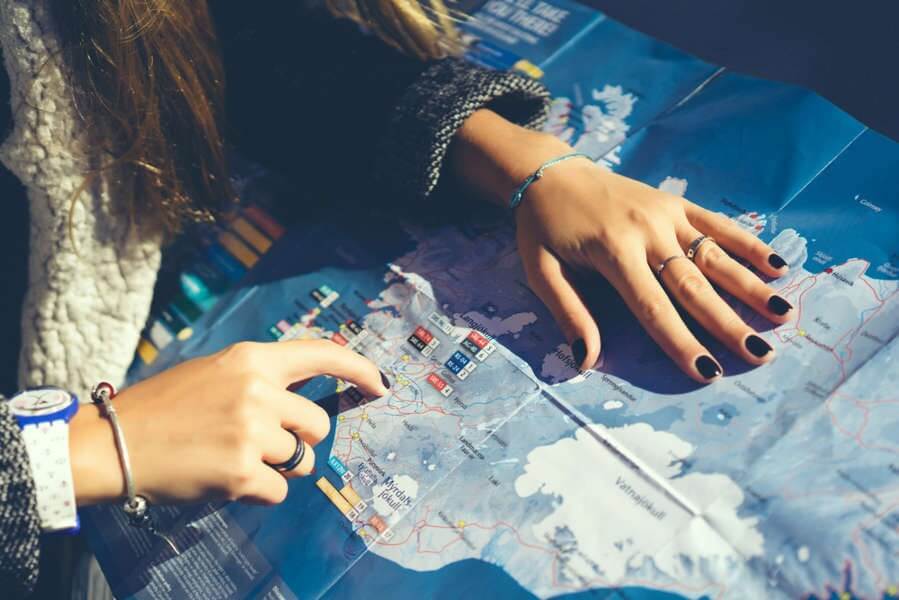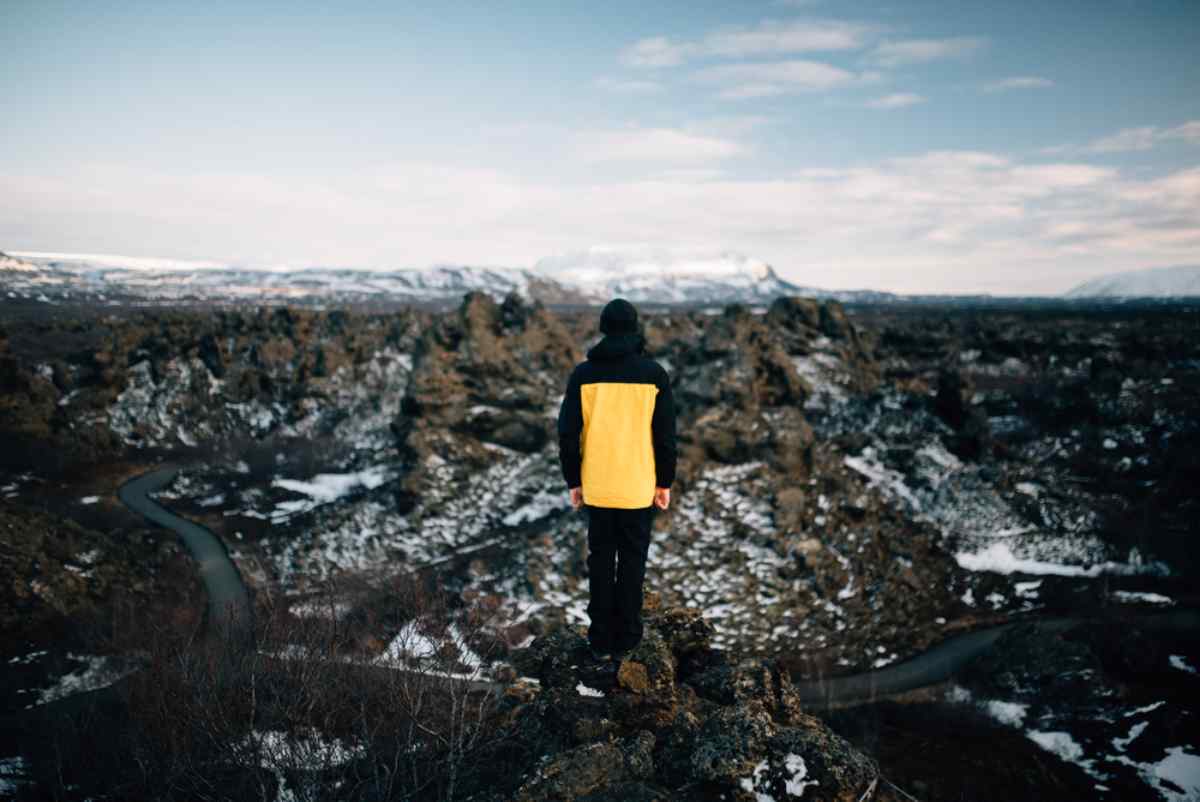Iceland is home to more than 10,000 waterfalls! But this is not an “if you’ve seen one, you’ve seen them all” type of scenario. Our waterfalls have very specific and unique aesthetics, features, and lies (or should we say cascades?) in various locations all across the country. And some of these falls are absolute must-sees during a trip to the island. One of these falls is Gullfoss Waterfall.
Gullfoss Waterfall may not be one of our tallest waterfalls here on the island, but it’s certainly one of the most impressive. In this article, we tell you why.
Quick Facts About Gullfoss Waterfall
- The name Gullfoss loosely translates to “golden falls” in Icelandic.
- Gullfoss is a 2-tiered waterfall that is roughly 32 meters IN TOTAL. The highest drop from one of its tiers is 21 meters.
- The strength of these falls can vary greatly (but its power remains undisputed) and can range from 109,000 liters PER SECOND to 2,000,000 liters PER SECOND!
- Gullfoss Waterfall is not your typical waterfall, where you can stand at the bottom and look meters up the cliffs at the water plummeting to the ground. The river is ground-level, and the falls essentially fall (pun intended) into a giant crevice. What makes this particularly interesting is that from certain angles, this crevice cannot be seen. Which makes it appear as though the rushing river simply disappears at one point.
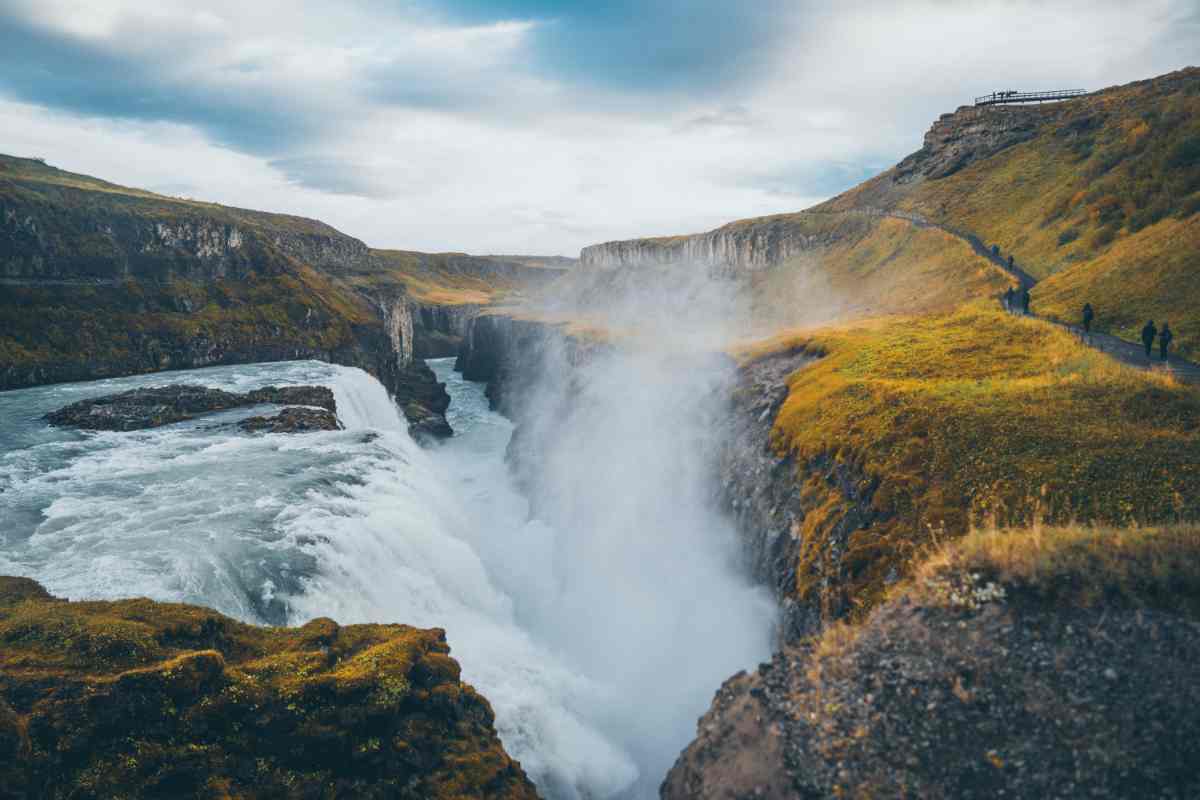
- Gullfoss is one of the few big falls here on the island that’s not used for generating hydroelectric energy, and it’s all due to a girl whose statue you can see at the falls today. She protested the move by walking barefoot from Reykjavik to the falls. Why exactly that dissuaded the “powers above” to stop any further action at Gullfoss, we don’t know, but it did.
What Makes Gullfoss Waterfall So Special?
Gullfoss Waterfall is one of our most famous waterfalls here in Iceland for a couple of reasons. Firstly, the falls are undeniably beautiful, and you’ll always see a few photographers (whether pro or amateur) taking a few snaps. Secondly, it has very unique features, such as the fact that the falls rush into a crevice and are not just tumbling over high cliffs.
And the fact that the falls take on a strange golden-brown hue on sunny days due to the sediment in its glacial waters. This is also where many believe the name Gullfoss (golden falls) comes from. But then there are others who firmly believe that the name is due to a popular legend here on the island…
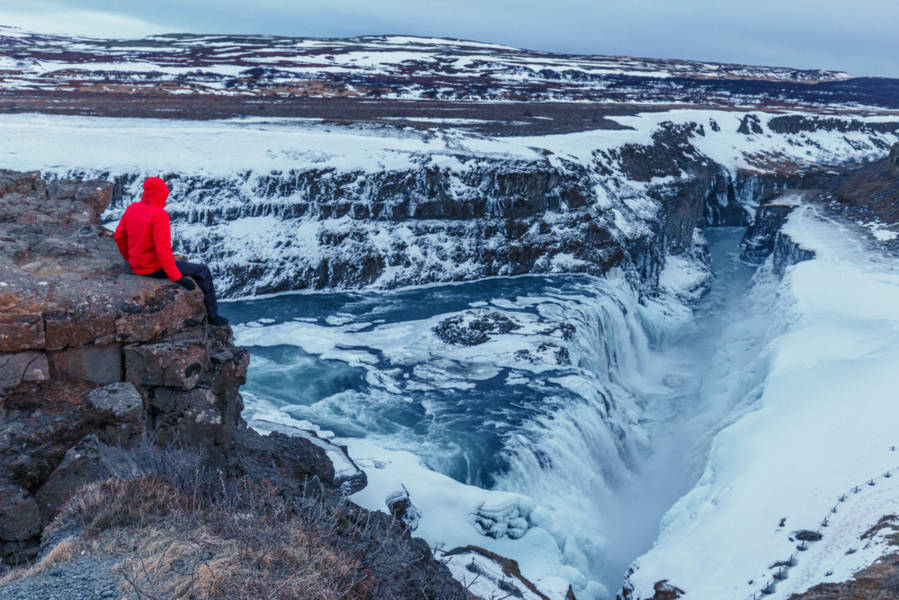
What is the Legend of the Gullfoss Waterfall?
The story can differ slightly, depending on who tells it, varying from a Viking to a farmer, but whatever he was, Gygur was a rich bugger. He was also a very greedy and selfish bugger. He was adamant that no one would get his riches after his death.
So, he devised a plan and hid his treasure behind the falls. Whether the legend is really true or not has never been established because it’s reeeaaaallly unwise trying to go through a veil of 109,000 liters of water crashing down on you every second.
How Was Gullfoss Falls Formed?
Gullfoss was formed because of a chain reaction. At the end of the last ice age, the glaciers on the island melted (whether it was due to volcanic activity, global climate change, or a combination of both, we’ll never really know for sure).
The glaciers melting led to major glacial floods, eroding their way through the earth, creating all sorts of caves, canyons, and crevices – including the one at Gullfoss.
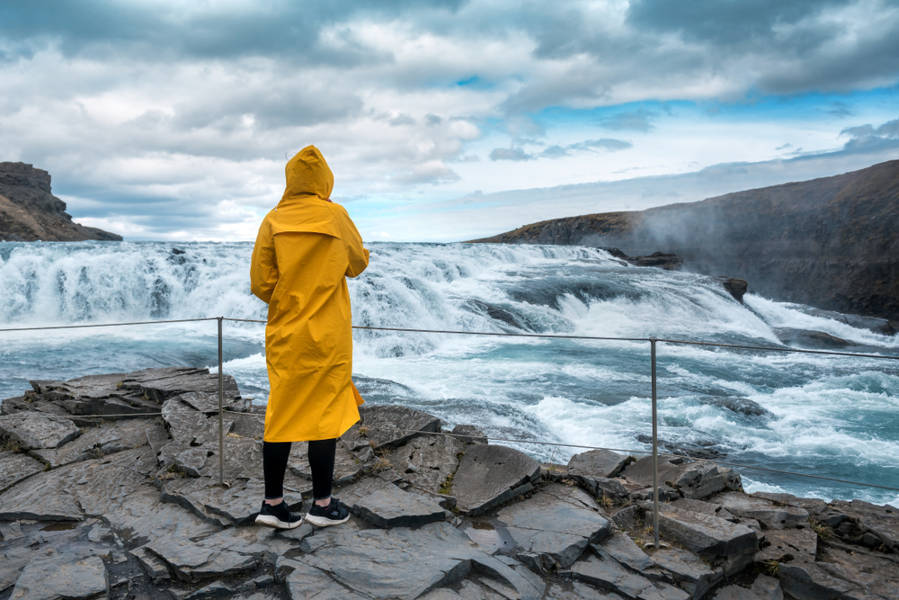
Where is Gullfoss Waterfall in Iceland?
Gullfoss Waterfall is in the canyon of the Hvita River in the southwestern part of the island. The falls can be found just off the popular Golden Circle Route (roughly 113 kilometers from the capital city of Reykjavik).
How to Get to Gullfoss Waterfall?
There are basically three ways you can get to Gullfoss:
Via Guided Tour
There are plenty of guided tours offered all across the island that will take you to Gullfoss. Whether it’s a day outing or part of a multi-day holiday tour package. Most of these tours will depart from our larger cities, such as Reykjavik.
Via Bus
You will find a number of public buses heading towards Gullfoss from the various cities and towns on the island. Some offer a direct trip, whilst others will require you to do some “bus hopping”.
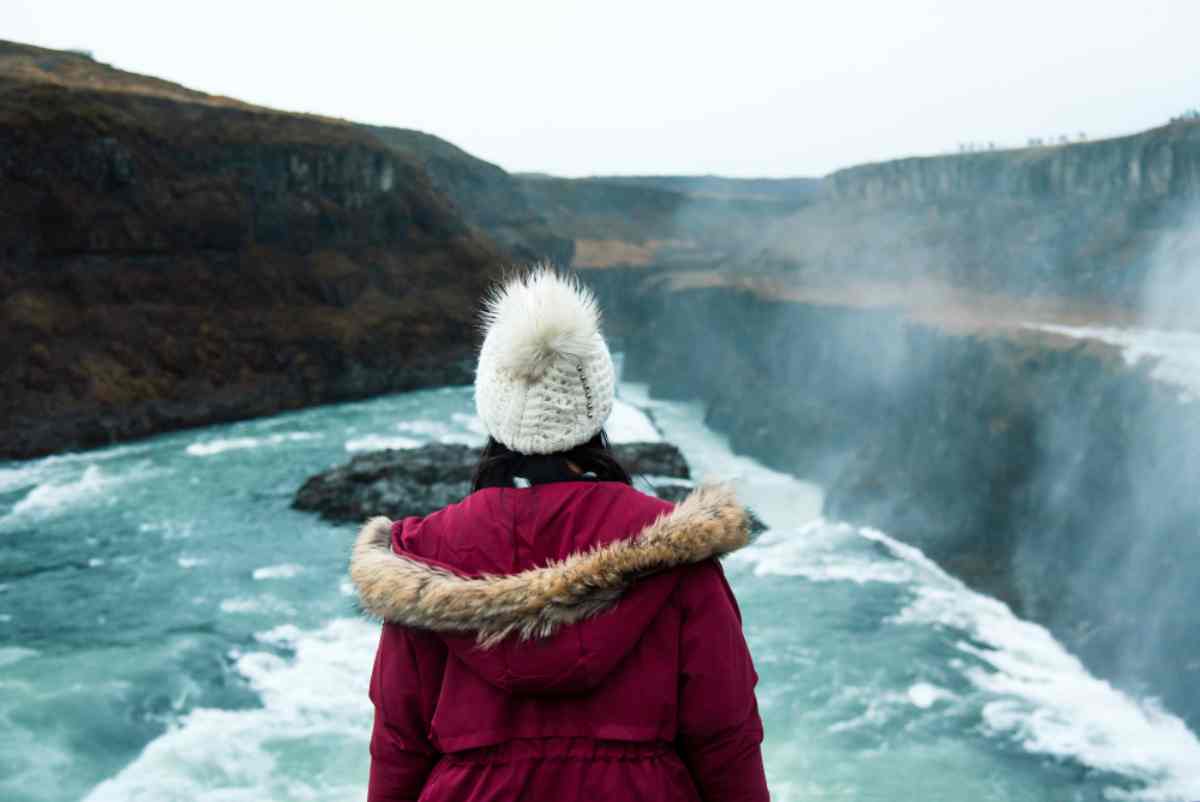
Via Car
This is the best and easiest way to get to Gullfoss and be in complete control of your trip itinerary and time. Since the falls are found along the Golden Circle, many opt to have Gullfoss as one of their stops on their Golden Circle road trip.
How much time do you need at Gullfoss?
This will be your personal prerogative and dependent on your reason for visiting (for example, just ticking it off the Iceland bucket list or taking a porfolio worth of photos?). Generally, most stay for about 2 hours. This gives you enough time to take the small hike to the falls and its various observation decks, as well as spend some time admiring Gullfoss.
Do you need tickets for Gullfoss?
Visiting Gullfoss Waterfall is completely free of charge. So, no tickets are needed to see this spectacular “show”!
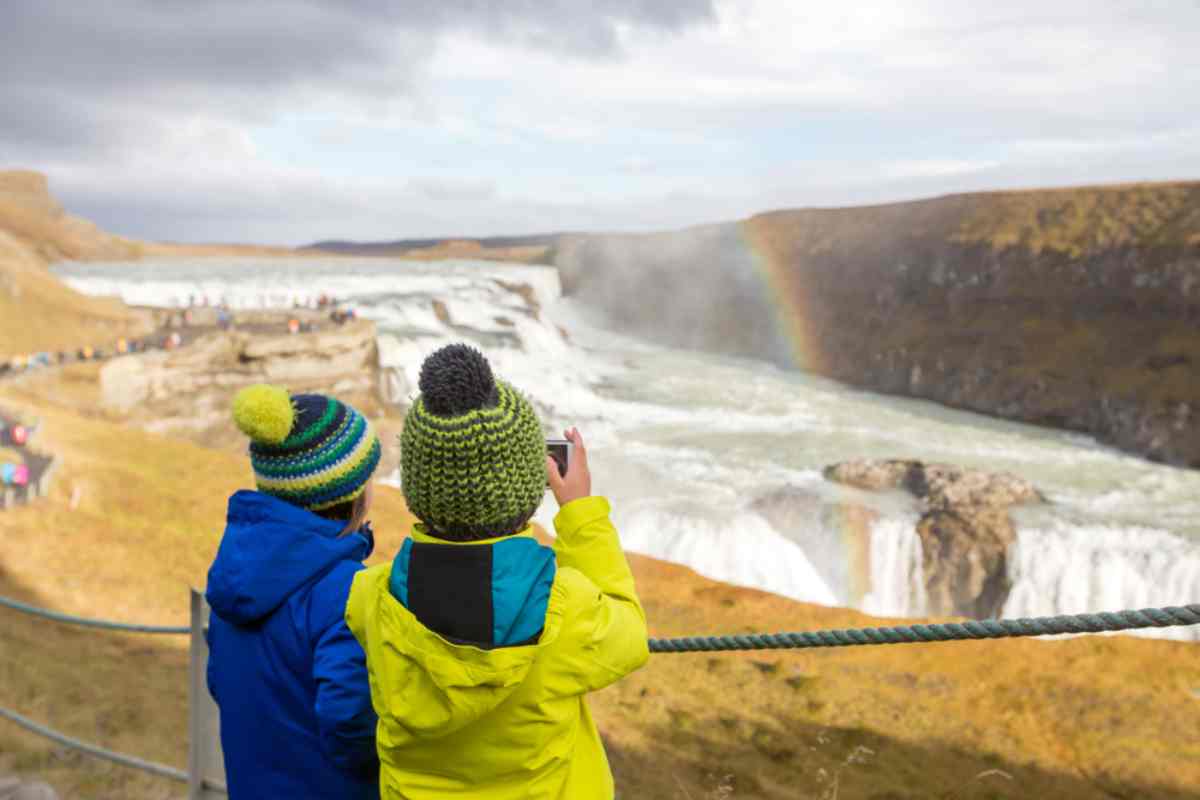
When is the Best Time to Visit Gullfoss Waterfall in Iceland?
Because it is one of our main roads (which means it’s paved and well-maintained), the Golden Circle is open to the public all year round, which means that you can also visit Gullfoss any time of the year. Most would still recommend that you visit this wet attraction during our warmer summer months in Iceland (between June and September).
Just keep in mind that summer is our peak season here on the island, so we recommend you stop at Gullfoss early morning or late afternoon to avoid the peak season masses. Except for the Iceland weather, there is no real reason why you can’t visit Gullfoss during the colder months on the island. Just walk carefully, since the walking trails and pathways around the falls tend to get pretty slippery.
Where to Stay Near Gullfoss Waterfall
If you’re planning on making Gullfoss the first pitstop on your Golden Circle road trip, you’ll find plenty of accommodation options in the area. You can go the more budget-friendly route and check in at self-catering accommodation such as the Geysir Modern Log Cabin, or you can choose to stay in luxury at hotels such as Hotel Gullfoss.
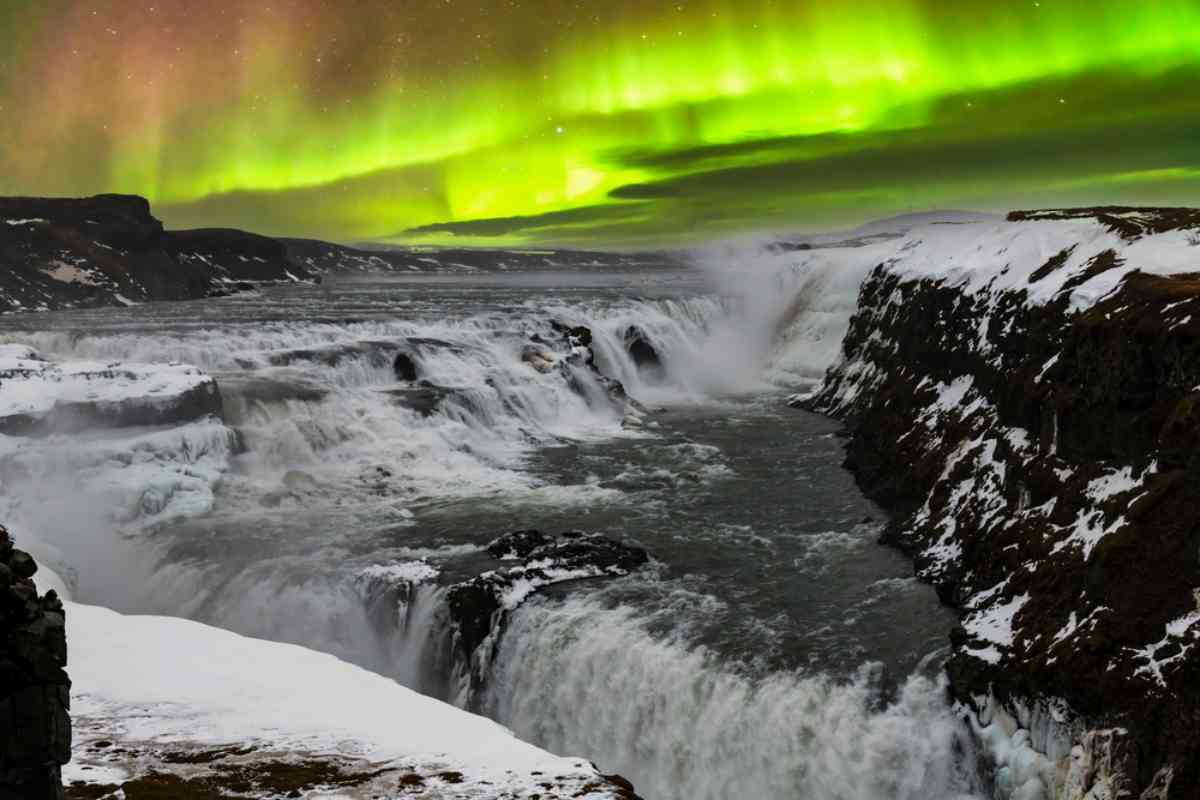
Gullfoss Waterfall; the “Golden Falls” in Iceland
Whether you get to see the golden tint or try peering through the veil of water to get a glimpse of a possible treasure chest, Gullfoss promises to be well worth a visit. Just rent a car in Reykjavik and hit the Golden Circle Route – Gullfoss is a breathtaking site just 1.5 hours away from the capital.


 By
By
